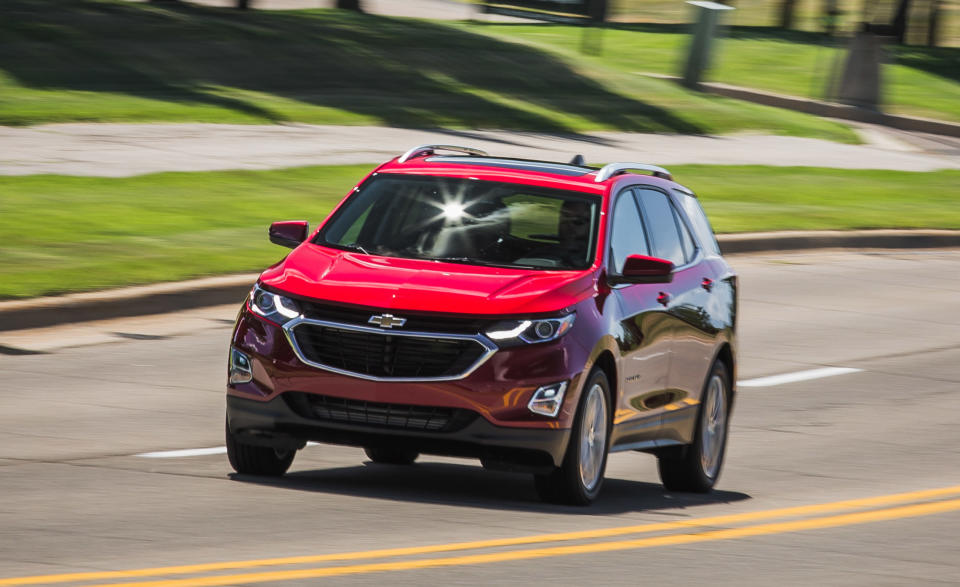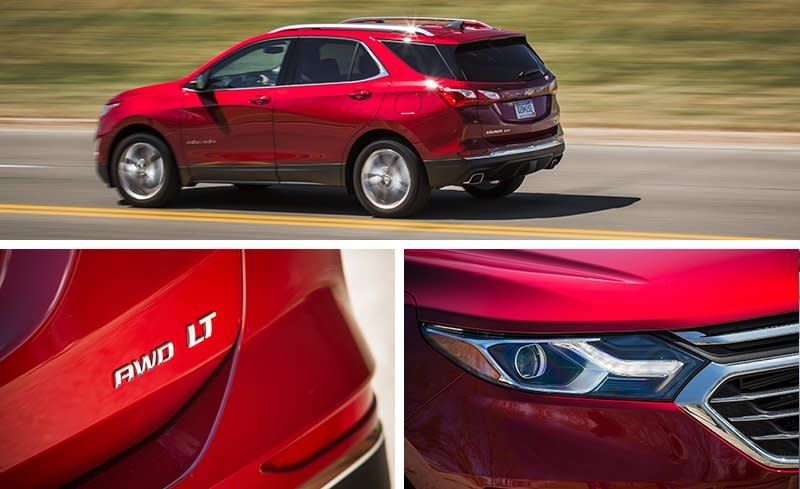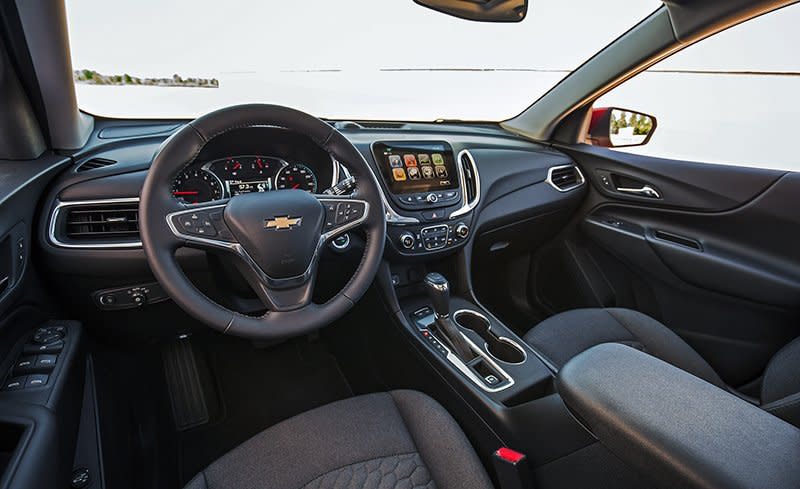2018 Chevrolet Equinox 2.0T AWD

From the September 2017 issue
General Motors has become surprisingly adept at developing rear-wheel-drive chassis that humiliate Europe’s legacy sports sedans and coupes. The Cadillac CTS, for example, makes the Audi A6 feel as if it has a sprained ankle, and it positively fat-shames the BMW 5-series. And last year, when we found ourselves confronted with the choice of whether to loft the Mercedes-AMG C63 S or the Chevy Camaro to our 10Best list, it was Milford, not Affalterbach, that carried the day.
Now GM is moving into the rapidly expanding suburb of Krossoverenberg, applying its dynamic aptitude to people movers. The all-new Chevy Equinox—and we can’t even believe we’re saying this, considering where the old Equinox left off—feels more connected, nimble, and dialed-in than some far costlier German competition.

If you are having a hard time believing this and demand proof that this Chevy secretly has the Europeans, rather than its less-expensive Japanese and Korean rivals, in its sights, consider this: The Equinox’s new turbocharged 2.0-liter four-cylinder (the 2018 model launched with a turbo 1.5-liter inline-four, and a 1.6-liter turbo-diesel is on the way) makes the same 252 horsepower as the Audi turbo 2.0-liter four in the Q5. The most powerful Honda CR-V engine, the turbocharged 1.5-liter, musters only 190 horsepower. The Chevy 2.0-liter delivers its 260 pound-feet of torque over an Audi-like rev range—2500 rpm to 4500 rpm in the Chevy against 1600 to 4500 in the Q5. But if it lacks the off-idle push of the Audi 2.0, it’s gutsy and punchy where the Equinox 1.5 is a bit sad.
The 2.0-liter engine is lashed to an all-new nine-speed automatic that supplies silken shifts with uncanny prediction, the transmission spanning a 7.6:1 overall ratio that helps the all-wheel-drive model produce 28 mpg on the EPA’s highway cycle. Like the 2018 Q5’s new Quattro with Ultra, the Equinox’s all-wheel-drive system can idle the driveshaft to the rear axle for greater efficiency.

In our testing, the 2.0-liter Equinox hit 60 in 6.6 seconds. That’s more than two seconds quicker than the new 1.5-liter Equinox and comfortably ahead of the top-trim CR-V, Ford Escape, and Kia Sportage. It lags behind the Q5 by 0.8 second.
Admirable output figures don’t necessarily make for an admirable crossover, but here they are delivered via a new platform that Chevy claims shaves almost 400 pounds off that of the outgoing Equinox, depending on trim. On our scales, the 2.0-liter car was 220 pounds lighter than the 2016 2.4-liter model we tested. The Equinox’s all-new body structure comes across as stiff and quiet, the chassis exhibiting refined impact damping and the body showing great discipline in corners. Whereas the Audi is cold and stoic, this Chevy has verve.
The new Equinox is also the right size inside and out, offering three more cubes behind the rear seat than the Audi, though less cargo room than the CR-V. Our $37,805 Equinox was Chevy-familiar inside, with the optional eight-inch MyLink screen dominating. Nothing optional about the huge A-pillars, the too-short-for-six-footers front-seat bottoms, and some plastics that recall the slot-car tracks of one’s youth. Still, this Equinox represents a quantum leap over the old one, nearly landing within the Audi’s footprints.
Specifications >
VEHICLE TYPE: front-engine, front-/all-wheel-drive, 5-passenger, 4-door hatchback
PRICE AS TESTED: $37,805 (base price: $33,785)
ENGINE TYPE: turbocharged and intercooled DOHC 16-valve inline-4, aluminum block and head, direct fuel injection
Displacement: 122 cu in, 1998 cc
Power: 252 hp @ 5500 rpm
Torque: 260 lb-ft @ 2500 rpm
TRANSMISSION: 9-speed automatic with manual shifting mode
DIMENSIONS:
Wheelbase: 107.3 in
Length: 183.1 in
Width: 72.6 in Height: 65.4 in
Passenger volume: 99 cu ft
Cargo volume: 30 cu ft
Curb weight: 3778 lb
C/D TEST RESULTS:
Zero to 60 mph: 6.6 sec
Zero to 100 mph: 17.1 sec
Zero to 130 mph: 39.8 sec
Rolling start, 5–60 mph: 7.0 sec
Standing ¼-mile: 15.1 sec @ 94 mph
Top speed (gov limited): 130 mph
Braking, 70–0 mph: 167 ft
Roadholding, 300-ft-dia skidpad: 0.85 g*
FUEL ECONOMY:
EPA combined/city/hwy: 24/22/28 mpg
C/D observed: 22 mpg
*Stability-control-inhibited.

 Yahoo Autos
Yahoo Autos 